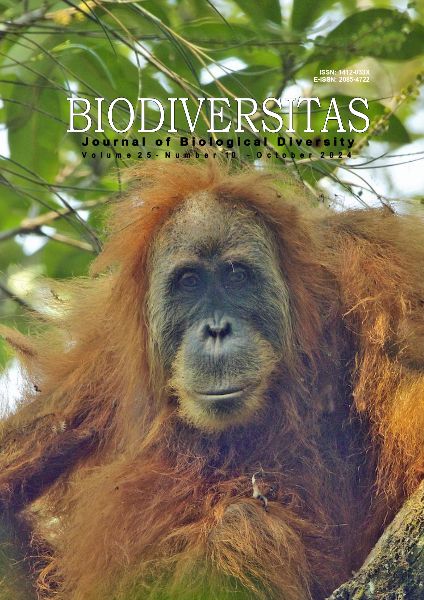Characteristics of six cherry tomato genotypes as genetic material for plant breeding programs
##plugins.themes.bootstrap3.article.main##
Abstract
Abstract. Wahyudi A, Hakim NA, Rachman MS. 2024. Characteristics of six cherry tomato genotypes as genetic material for plant breeding programs. Biodiversitas 25: 3850-3859. The morphological characteristics of tomato plants (Solanum lycopersicum L.) are a source of genetic variation in efforts to improve the quality of tomatoes in plant breeding programs. Breeding programs focus on developing genotypes with high fruit set and yield potential. Cherry tomatoes are often selected for their prolific fruiting capabilities. This study aimed to determine the morphological characteristics of six cherry tomato plant varieties. This study used a Randomized Block Design (RBD) comprising four introduced hybrid cherry tomato varieties from Japan (Chika, Chou Amai, Premium Ruby, and Aiko) with two commercial hybrid varieties from PT. Bintang Asia (Citra Asia F1 and Rempai), each with three replications. Data were analyzed using analysis of variance (ANOVA) at a 5% significance level, and orthogonal contrast analysis was adopted for mean value testing. Observations of qualitative characteristics were conducted from the vegetative phase through post-harvest. The results showed that Japanese-introduced tomatoes were superior in fruit length, sweetness, and number of fruits per plant. Meanwhile, the Chika tomato variety was superior in the number of leaves under the first bunch (8.67), weight of 10 fruits (280 g), fruit width (3.75 cm), and flesh thickness (0.45 cm). The Premium Ruby variety was superior in fruit sweetness (7.9 ºbrix) and in harvest age (64 DAT). In comparison, the Aiko variety showed superiority in bunch length (22.57 cm) and number of fruits per plant (238.33). The characteristics of introduced hybrid cherry tomato varieties from Japan can be used as material for assembling new cultivars. These findings have direct implications for increasing tomato productivity in Indonesia, providing valuable insights for future breeding programs.

